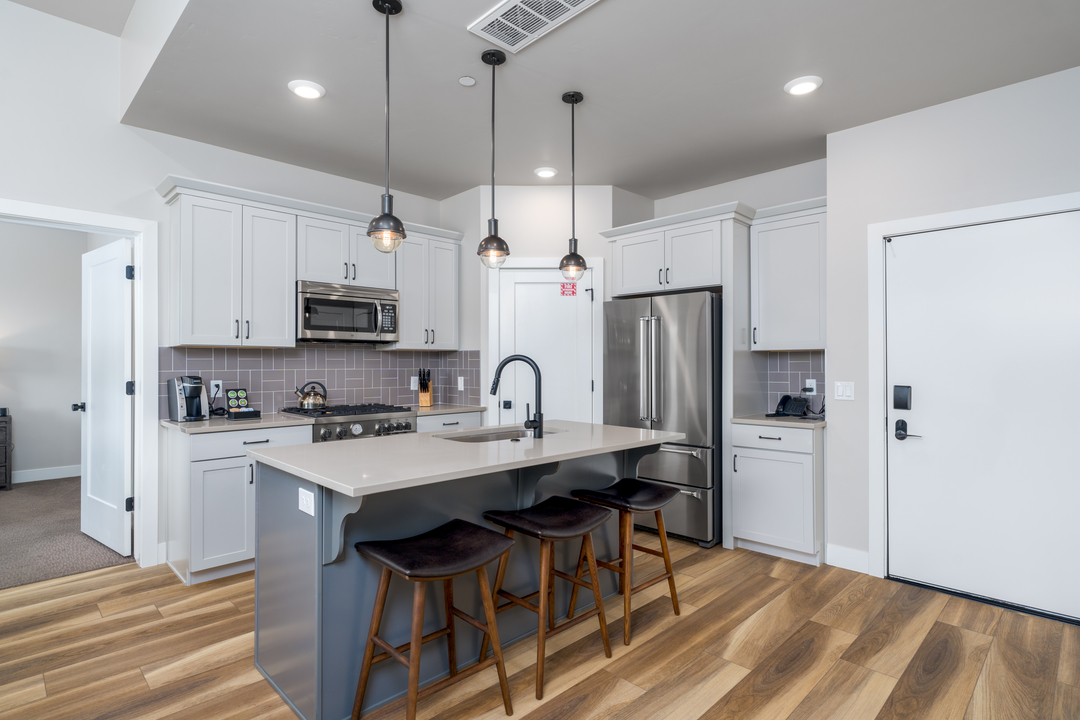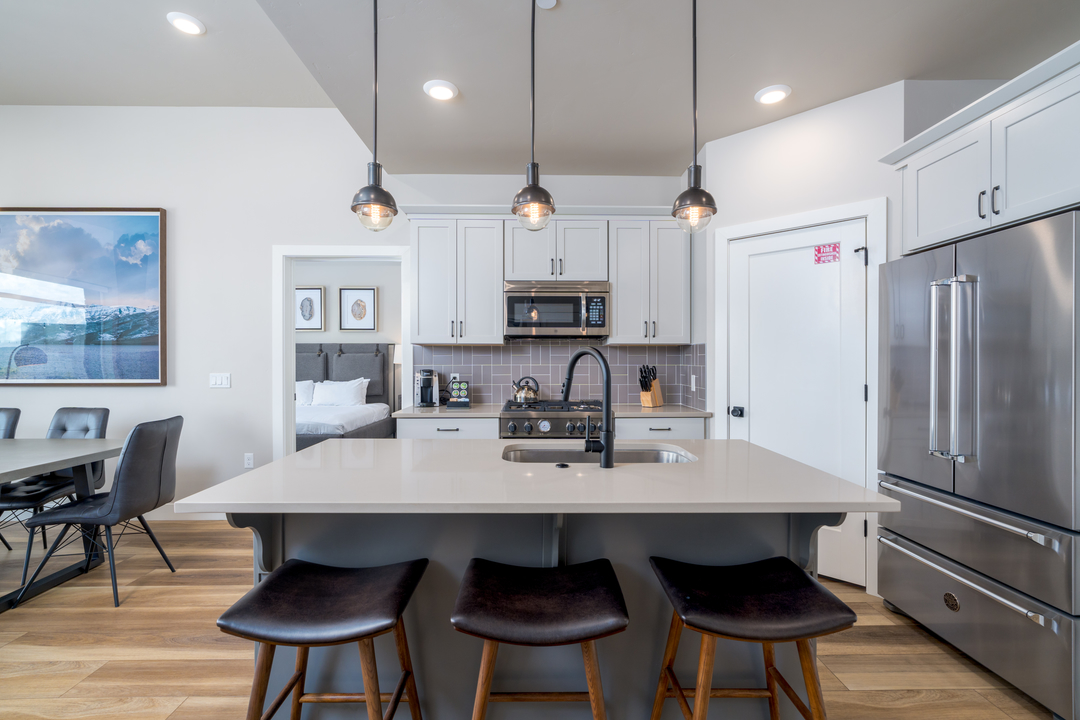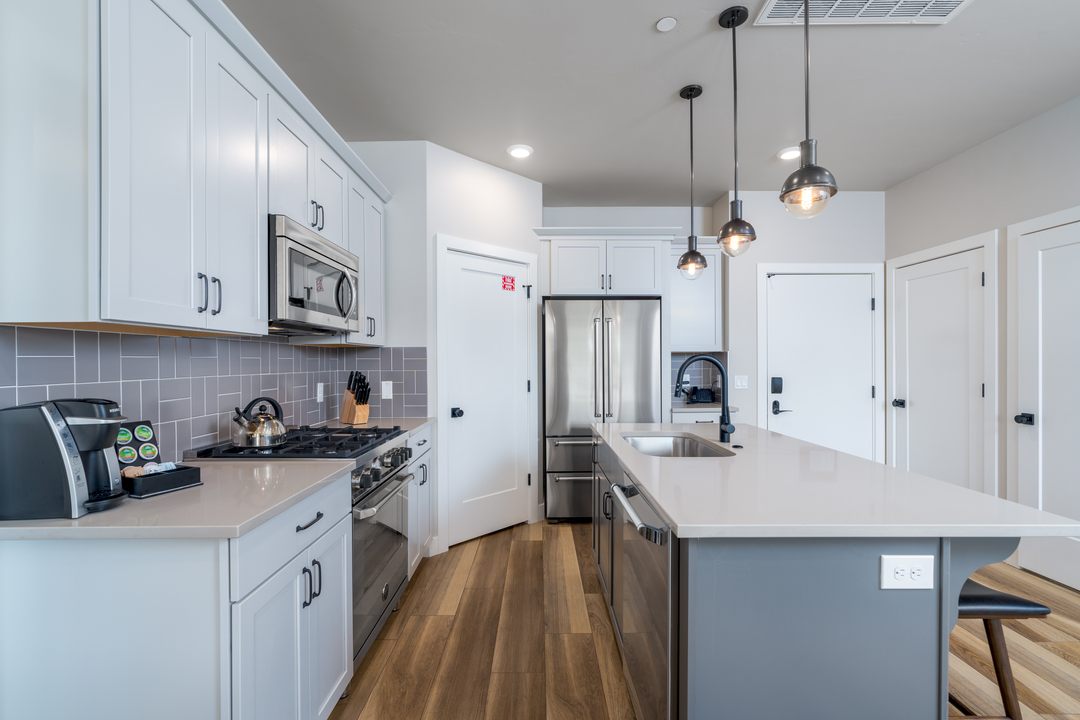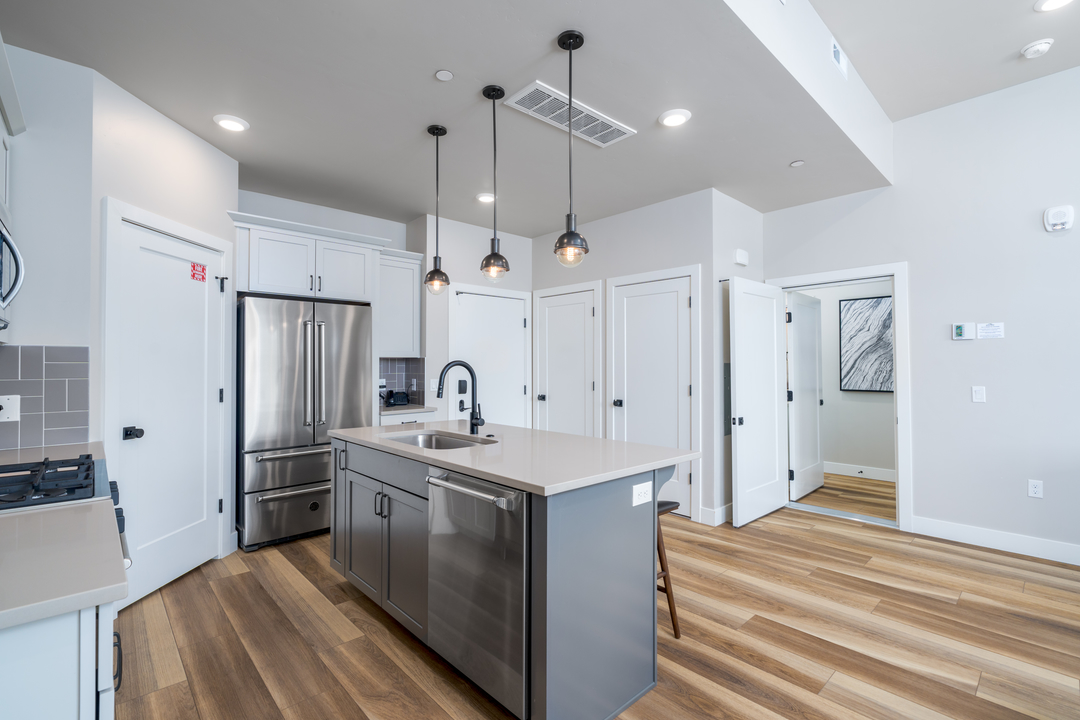
Snap Decision: Why Choose a Full-Frame Camera Over Smartphones for Professional Real Estate Videos
Smartphones like the iPhone 16 Pro have evolved into miniature photography and video powerhouses. It's tempting to rely solely on these devices for all visual content needs. With advanced features and unparalleled convenience, smartphones have become a go-to for capturing life's fleeting moments. However, when the stakes are high, particularly in professional realms like real estate photography, architecture, and high-end videography, full-frame cameras like the Sony A7IV remain unmatched in their performance and quality. This blog post explores why investing in the right equipment and team is a wise choice for serious professionals looking to produce exceptional work.
Larger Sensor for Superior Image Quality
A key factor that sets full-frame cameras apart is their large sensor size. This is crucial in low-light situations such as twilight videos and photography. More light leads to images with excellent dynamic range and depth, which is ideal for professional editing.
A full-frame sensor, about 36mm x 24mm, is 4x larger than the iPhone 15 Pro's estimated 9.6mm x 7.2mm sensor. This allows full-frame sensors to collect more light, improving low-light performance, dynamic range, and depth-of-field control vital for professional photography. While smartphones like the iPhone use computational photography for everyday quality, the larger full-frame sensor captures images with superior detail and clarity, essential for high-end photography.
The larger sensor also improves color accuracy and detail resolution, which is crucial for capturing architectural details or subtle nuances. In contrast, smartphone images might lack the clarity for high-quality prints or detailed online presentations.
The increased sensor size enhances the aesthetic quality of photographs, providing a more natural look. Whether capturing an expansive interior or a building's intricate façade, a full-frame camera showcases your subject in the best possible light. The bottom line? For professionals who demand top image quality, full-frame cameras deliver unmatched results.
Larger sensors in full-frame cameras allow for better low-light performance and reduced noise. - Photography Blog

Professional-Grade Video Features
Regarding video production, full-frame cameras offer several advantages that smartphones simply can't match. They provide extensive manual controls, allowing videographers to fine-tune settings like exposure, white balance, and frame rates, ensuring consistency throughout a shoot.
Full-frame cameras also record video at higher bitrates, meaning more data is captured per second of footage. This results in better detail, color fidelity, and greater flexibility during post-production editing. Advanced features such as 4K and even 8K video capture, combined with sophisticated autofocus systems, make full-frame cameras the preferred choice for cinematic video production.
While smartphones can shoot in high resolutions, they often compress video files, reducing quality. They lack customizable frame rates, variable aperture settings, and other professional video features essential for high-end production. For serious videographers, the capabilities of full-frame cameras are indispensable.
Investing in a full-frame camera elevates professional photography and videography to new levels of excellence. - Fstoppers
Interchangeable Lenses for Creative Flexibility
Another major advantage of full-frame cameras is the ability to use interchangeable lenses, which offer limitless creative possibilities. Real estate videographers often switch out their wide-angle lenses that shoot around 16-24mm for a longer lens of around 50-75mm to capture detail shots of backsplashes, custom cabinetry, flooring, and chandeliers.
Smartphones come with fixed lenses, and while some offer digital zoom capabilities, these often result in a noticeable loss of image quality. On the other hand, full-frame cameras allow photographers to experiment with different focal lengths and aperture settings, enabling them to achieve the desired composition and effect.
This versatility is a must-have for professionals who must produce diverse content, from tight shots highlighting intricate details to sweeping landscapes capturing the grandeur of a property. Switching lenses enhances creativity and ensures that each photograph meets the high standards expected in luxury real estate markets.

Control Over Depth of Field
Full-frame cameras provide superior control over depth of field, a key element in crafting images with professional appeal. Depth of field refers to the portion of the image that appears sharp and in focus, and manipulating it allows photographers to create stunning effects such as background blur (bokeh) that draws attention to the subject.
In real estate photography, controlling the depth of field can help emphasize important features of a room or exterior without the distraction of busy backgrounds. While smartphones offer software-based simulations of depth-of-field effects, they often fall short of the natural, precise results achieved with a full-frame camera and modern zoom lenses such as the Sony 16-35 GM Mk. 2.
With manual controls over aperture settings, photographers can achieve the exact focus required, adding a layer of professionalism and enhancing the overall composition. This ability to fine-tune depth of field is invaluable for producing images that stand out and effectively convey the intended message.
Better Performance in Low-Light Conditions
Low-light performance is crucial in professional photography, and full-frame cameras excel. Their larger sensors capture more light, resulting in images with less noise and greater clarity, even in challenging lighting conditions.
Low-light performance is crucial for professional real estate videos and photography, where interior shadows and twilight sessions offer limited natural lighting. Full-frame cameras maintain superior image quality without excessive noise reduction when shooting in twilight.
In contrast, while improving in low-light performance, smartphones still struggle to produce clean, sharp images without introducing artifacts or altering the scene's natural appearance. The superior low-light capabilities of full-frame cameras provide a distinct advantage for demanding professionals.
Full-frame cameras provide manual controls and higher bitrates for professional-grade video production." - Videomaker
Post-Production Flexibility
In professional photography and videography, raw footage and images are transformed into polished, compelling content in post-production. A general rule of thumb is 2-3 hours for editing for every hour of filming. Modern cinema cameras like the Blackmagic Pocket Cinema Camera 6k Pro offer a significant advantage by capturing images in RAW format, preserving all the data needed for detailed editing.
RAW files allow videographers to adjust exposure, contrast, color balance, and other attributes without degrading image quality. This level of control is a game-changer (words I don't use often) in real estate cinematography, where editing is where raw footage becomes a masterpiece.
On the other hand, smartphones typically save images and videos in compressed formats like JPEG or HEIC, limiting the amount of data available for post-processing. Even when RAW options are available, the quality falls far short of what a full-frame camera can produce.
Full-frame cameras capture images with a greater dynamic range than smaller sensors, providing more detail in highlights and shadows. - Digital Trends

Next Steps
As smartphones evolve and offer impressive photography capabilities, full-frame cameras remain the gold standard for professional work with outpaced innovation. Their larger sensors, interchangeable lenses, superior low-light performance, and extensive manual controls make them the king of content creation for discerning clients. Smartphones have their place for casual shooting, but full-frame cameras deliver the quality, flexibility, and reliability required to meet the demands of professional projects.
For those in real estate, architecture, or high-end content creation, investing in better video media is a strategic decision that ensures your work sets the standard. Opting for convenience is a growth-killing mindset that will chart your real estate business for decline. Call or text Michael at Summit Media to discuss your upcoming projects if you're ready to take your real estate photography and video content to the next level.
Call or text: (435) 901-3228
Email: michael@summit.media
Location: Salt Lake City, UT

